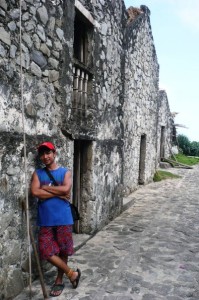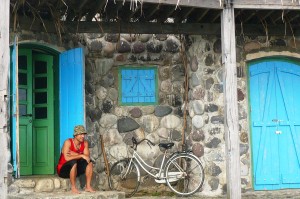
“Arava u mayet an namaes u ryes”, “There is no strong man when the sea is at its worst”, goes the Ivatan proverb.
As I traveled around this northernmost part of the Philippine Archipelago last Holyweek, I discovered that what I read about the place is true, if not an understatement.
Also known as the “typhoon island, Batanes is a small group of islands that can make a great destination, even if it’s located over 800 kilometers north of Manila.
Composed of three major islands – Batan, Itbayat and Sabtang – and seven smaller islets (Dequey, Siayan, Mabudis, Ibuhos, Diogo, North Island, and Y’ami), these bewitching isles’ diverse sceneries have been compared to the landscape of New Zealand, Ireland and the Scottish Highlands.
The amazing backdrop of Batanes is also distinct from other provinces in the Philippines – steep cliffs, rolling hills, deep canyons and boulder-lined shores. Its islands are defined by the splash of sea against rugged cliffs, verdant hills dominated by grass and stunted trees, and the great Mt. Iraya.
Over the centuries, harsh weather and rough seas have shaped the islands’ picturesque cliffs and land formations. These far-flung islands; isolation has preserved their old captivating charm, with the island’s local economy driven by the stream of pecuniary activities from seafarers and their families.
The Ivatans are natural born boat builders and seafarers with very strong connection with the seas – bounded by Bashi Channel on the north, the Balintang Channel in the south, the Philippine Sea/Pacific Ocean west – which explains why seafaring families compose about 20-30% of the province’s 15,000 population.
Being on board huge ocean-going vessels is not much different from travelling the Batanes islands using the sturdier native boats known as faluwas, chinarem, or the tataya.
In response to high waves brought about by the currents, the local boat is unlike the common Southeast Asian outrigger banca. It is a wooden boat with rounded sides that skims the stormy Batanes sea. These boats have deep rounded hulls that bobble up in the sea. They are slow yet capacious and are sensibly fit for transportation, which is considerably and extension of the Ivatan way of life. The Ivatans are known to live simply – and bike daily.

Well, aside from the faluwas, the Ivatan’s way of life is entwined with the trusty bicycle wheare most of these are vintage Japanese and Taiwanese in style – oddly-shaped, no gears, single-speed, low seats, and have baskets and dynamo-powered lights in front, although a few motorized bikes and scooters have already found their way into the lifestyle of some.
Today, bikes have become a daily mode of transport in the island to get around to nearby towns.
For the Voyager, it’s “Dios mamajes” for now. It’s Ivatan for “thank you”.
Perhaps this is the most appropriate phrase one can say upon leaving this wonderful place called “Batanes.”
So, see you until next voyage.
Source: Ahoy! the Seafares’ Magazine; Vol XI No. 47 – 2nd Quarter 2008, official publication of the Apostleship of the Sea (AOS).
Atty. Dennis R. Gorecho, Partner of SVBB Law Offices. He can be contacted at: info@sapalovelez.com or drg@sapalovelez.com.
